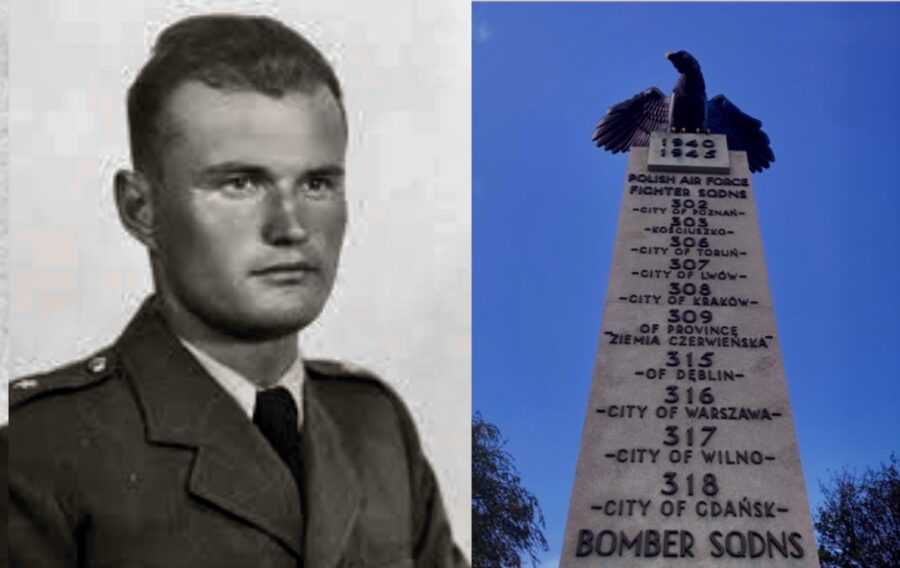Krystyna Skarbek, daughter of Jerzy Skarbek, was born on 1 May 1908 in Warsaw. Her work for the British intelligence SOE during the World War II shows great courage and talent as well as a tragic end marked by being left by the British and haunted by her asset of great charm that helped save lives during the war.
Her mother, Stefania Goldfeder, came from a wealthy family of Jewish bankers and brought a substantial dowry into the marriage, significantly enriching the Skarbek estate. A cherished „daddy’s girl” from an early age, Krystyna excelled at horse riding and skiing. Celebrated for her beauty, she competed in the Miss Polonia contest in 1929, earning a ranked position.
In November 1938, Krystyna Skarbek married her second husband, Jerzy Giżycki, a traveller and author of adventure novels for young readers.
By September 1939, the couple lived in Kenya, where Giżycki served as a diplomat. Upon hearing of the outbreak of war in Europe, they departed for France. Soon after, Krystyna separated from her husband and made her way alone to Britain.
There, drawing on her pre-war social connections, she volunteered for service with the Special Operations Executive (SOE) — a secret British intelligence organisation established by Winston Churchill to carry out sabotage behind enemy lines. From that moment, she took the fake identity of Christine Granville.
As she slipped into her new identity as a British intelligence agent, Krystyna Skarbek took the unusual step of altering her age, shaving off seven years and listing 1915 as her year of birth. Her first mission took her to Hungary, where she was tasked with establishing underground operations alongside an old pre-war friend, Andrzej Kowerski. From their safehouse in Budapest, she undertook several perilous courier trips through Slovakia into German-occupied Poland.
During these clandestine missions, Skarbek gathered critical intelligence, including information that, according to British sources, contributed to Winston Churchill’s forecasting of the German invasion of the Soviet Union.
In June 1940, she made a dangerous visit to Warsaw in an attempt to persuade her mother to flee the city. Tragically, Stefania Skarbek refused to leave and was later killed in the Warsaw Ghetto.
Even during the war, tales of Skarbek’s daring and audacity spread widely. In one celebrated incident, while escorting a group of Czech officers from Hungary into Yugoslavia, the vehicle she was travelling in broke down and was stopped by a German patrol. Thinking quickly, she produced forged papers, charmed the soldiers, and even convinced them to help push the car across the border.
By July 1944, she had been parachuted into southern France to support the Resistance. There, she orchestrated the release of several key members of the sabotage network „Jockey” from Gestapo custody. According to accounts, she bluffed the local Gestapo commander by claiming she was the niece of British General Montgomery and promised to guarantee his safety once the Allies arrived, if he released the prisoners. The officer, remarkably, believed her, freed the captives, and handed her a pistol and vehicle, which she used to drive them safely through enemy lines.
In late August 1944, as the Warsaw Uprising raged, Skarbek arrived in London. She repeatedly requested to be deployed to support the resistance in Poland but was consistently turned down.
Krystyna Skarbek was officially demobilised in April 1945 in Cairo. Without British citizenship, she shared the disillusionment of many Polish veterans who had fought for Britain but were left without a place in its post-war society. She received a £100 gratuity and a personal letter of thanks from Churchill, who reportedly called her “his favourite spy.”
In August 1946, her marriage to Giżycki was formally dissolved. Despite her wartime service and decorations, she struggled to find stability. She held a series of modest jobs: hotel maid, telephone operator, sales assistant at Harrods, and eventually a stewardess aboard the passenger ships Rauhine and Winchester Castle, travelling between Britain and South Africa.
Skarbek’s personality was most likely the archetype for the young writer she met after the war, a Navy Intelligence Division officer by the name of Ian Fleming. It is said that their romance led Fleming to describe Skarbek’s charm and character in the person of Vesper Lynd – the famous partner of a worldwide known British spy, James Bond.

Krystyna Skarbek died on 15 June 1952 after being fatally stabbed by a hotel steward, Mudlowney, whom she refused to marry. She is buried in the St. Mary’s Catholic Cemetery in Kensal Green in London.
Some historians say that the story of Krystyna Skarbek’s death deserves more attention, as the execution of her killer indicates doubts about the intentions of the investigation.
Krystyna Skarbek’s extraordinary story was told by a British author, Clare Mulley in a bestseller called The Spy Who Loved.
On 16 September 2020, at the initiative of British author and historian Clare Mulley, English Heritage unveiled a commemorative “blue plaque” dedicated to Krystyna Skarbek. The plaque is located on the facade of the I Lexham Gardens Hotel in Kensington (formerly the Shelbourne Hotel).
The plaque reads the following: “Christine Granville, born Krystyna Skarbek, was one of the most distinguished secret agents of World War II, undertaking numerous successful missions and employing her linguistic skills, powers of persuasion, and sheer courage to save countless lives. She was also Britain’s longest-serving female agent.”
In 2024 Skarbek was honoured with a photograph at the National Portrait Gallery in London as part of a new exhibition on female spies. You can read about it in our article Krystyna Skarbek, a WW2 spy, honoured in National Portrait Gallery exhibition.
Source: Dzieje.pl
Photos: British Poles
Tomasz Modrzejewski















